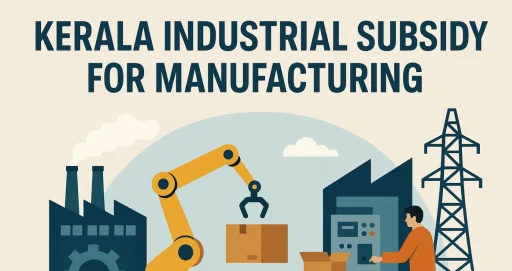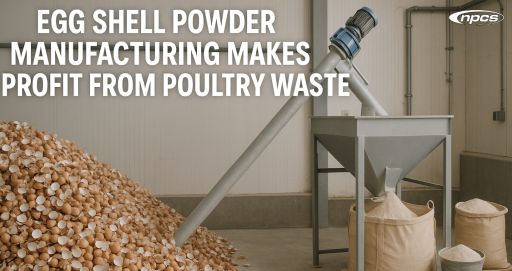The years have changed very fast, but in the industry’s applications, automation is a great and pronounced success factor for production processes efficiency. The global industrial automation helps manufacturing companies market is valued at around USD 205.86 million which is supposed to grow up to USD 395.09 billion by the year 2029, with a growing CAGR of 8.6%.
As per the new research report by McKinsey Global Institute, almost 800 million jobs can be automated globally through 2030 and out of that, many will belong to the manufacturing sector. But this move is being driven by falling costs in robotics and sensors, combined with the growing sophistication of artificial intelligence that now enables machines to do things that were once thought to require the input of humans.
Boston Consulting Group studies have shown that automation can increase productivity by as much as 35% and lower manufacturing costs along that stretch by 20%. Such trends bode good for manufacturers in complementing production through increased productivity thereby giving them the competitive edge.
Role of Automation in Manufacturing Industry’s Revenue Growth
Indeed, manufacturers no longer have options for automation adoption, but necessity, making it mandatory for staying competitive globally. Here are a few ways through automation the manufacturing industry evolves and drives revenues.
Increased Production Efficiency
Automated systems achieve production levels higher than those of human workers by functioning at a very fast rate while maintaining consistency. In this way, manufacturers can satisfy a higher volume of orders to meet increasing customer demand and thereby increase revenue.
It also reduces the time during which production stops due to human error, equipment failure, or inefficiency, resulting in even more productive hours and increased output statistics as a final result.
Improved Product Quality
When it comes to establishing the best quality control, automated systems are flawless in accuracy as well as dependence. This means a significant reduction in returns and rework, and also adding to the satisfaction of the customers for which they might look forward to buying more from the same source, further increasing revenue.
More complicated and unique products, which have higher selling prices, can be manufactured through automation.
Reduced Costs
Long-term savings realized in labor cost of repetitive activity require fewer people to perform the labor-intensive tasks. Although most of the automatic machines would require an initial investment, it would eventually bring a very significant reduction in costs in the long run.
Reinvested savings may include those for marketing, product development, or expansion, which all contribute to revenue growth. With automated techniques, organizations will reduce the use of materials and reduce wastage. This lowers production costs and translates to competitive differences in pricing, thereby opening up chances for better sales and higher revenues.
Increased Innovation and Agility
By automating mundane chores, an enterprise can leverage human resources to develop new ideas and come up with better products, processes, and business models. These are likely to turn into the new revenue gains and a competitive edge in the marketplace. This will lead to faster adaptation and efficiency when it comes to market changes.
A business takes advantage of opportunities while responding to trends that emerge in no time, pinning into prospects that potentially lead to higher revenue. Organizations need to be able to quickly design new processes, test them, and implement them.
Gartner highlights this growing need, reporting that businesses are increasingly seeking Business Process Automation (BPA) tools that can seamlessly integrate with existing systems like ERP and CRM, moving beyond a siloed approach.
Automation in Manufacturing Driven by Technology
The manufacturing industry is undergoing a radical transformation driven predominantly by automation. The powerful and promising combination of data and analytics, cloud computing, and artificial intelligence/machine learning forms the core of this new dimension. This is how automation is facilitated through these technologies:
Data Collection and Analysis
- Sensors and Devices:
- Data Aggregation and Storage: The acquired data are aggregated and stored in cloud-enabled platforms for easy access, management, and analysis.
- Data Analytics: Using advanced analytics, raw data is converted into usable information. This information reveals trends, detects potential issues, and provides valuable insights for process optimization.
AI/ML-powered Automation
- Machine Learning Algorithms: These” algorithms analyze the collected data to find and learn patterns from historical trends.
- Equipment Failure Prediction: AI/ML can analyze equipment failures based on this analysis even before they happen with proactive maintenance saving time and avoiding equipment loss.
- Process Optimization: Real-time data and historical trends get used for AI/ML optimizing production schedules, resource allocation. It process parameters leading to an increase in efficiency and throughput.
- Quality Control: Algorithms using AI analyze images and sensor data to detect real-time defects in products during production. Thereby ensuring consistent quality and minimizing wastage.
- Robots that learn: It allows robots to learn from their experience and thereby develop a better way of completing tasks with greater efficiency.
Cloud-based Integration and Scalability
- Cloud-based MES (Manufacturing Execution Systems): These platforms really are giving information at real time for production processes enabling their monitoring, controlling and optimizing from any place around the globe. Integration with the system already in place:
- Integration with Existing Systems: Cloud’ becomes seamless automation of solutions with existing business systems like ERP (Enterprise Resource Planning) and CRM (Customer Relationship Management) for data exchange and count of operations.
- Scalability: Benefit of cloud-based solutions is easy scalability to match the growing data volumes and evolution of automation requirements.
How Automation in Manufacturing Businesses Have Transformed Their Workflows
Boeing automated inspection
In Boeing, part of automation that infers quality checks on aircraft parts within the company. It improves the speed and accuracy with which the boards are subjected to inspection. The company had modified its quality from being “smart” tools and automation to streamlining inspection processes. According to the new program on quality transformation, Boeing mechanics would perform more checks on parts modified by them.
Than inspections done beforehand using the third party to verify accuracy. Active thermography is among the new types of inspection methods that Boeing is exploring. As alternatives to the conventional ultrasonic inspection methods for possible faster and more accurate inspection.
The incorporation of automation helps manufacturing companies and progressive technologies in Boeing’s quality checks forms part of the comprehensive approach for strengthening the quality management within the company.
Bosch digital factory
By Business Process Automation (BPA), Bosch has optimized semiconductor manufacturing processes by automating the activities. Standardizing workflows associated with such manufacturing processes as engineering change management. Production route setup, quality management and much more. These led to massive reductions of process times, from 60 to 15 minutes, and also minimized errors. Creating a very efficient and precise manufacturing environment.
Tesla Gigafactories automation
Automation helps manufacturing companies is the heart of a gigafactory; without it, everything will just come undone. And most importantly, it would affect the ability to produce proper volumes of batteries. Self-driving carts, Automated Guided Vehicles (AGVs), would transfer materials and parts throughout the factory floor from production to shipping.
All avoid manual delivery and the need for time-consuming transportation. Manufacturing companies use advanced automation technology to optimize production. This includes opening additional temporary assembly lines intended to increase volume capacity.
Conclusion
In summary, automation helps manufacturing companies offers many advantages in the manufacturing sector. It is synonymous with higher productivity, better quality, reduced cost, and safety. How best can a manufacturer gain by exploiting the twin plunder of automation and IT? These are the ultimate modes of staying competitive, improving efficiency, and producing better goods and services for customers.
Note: Fore any business queries contact us : Niir.org
Read Related Blogs: NPCS blogs





